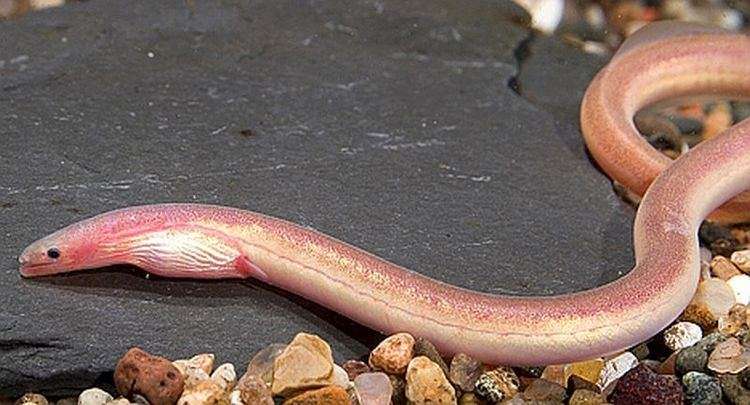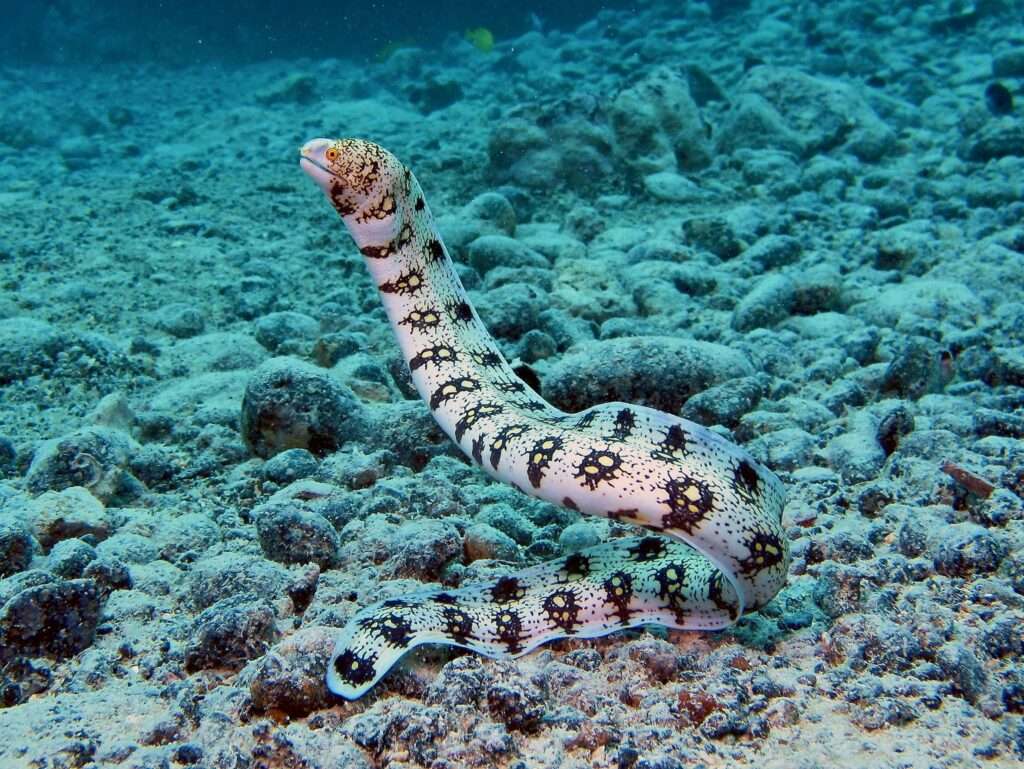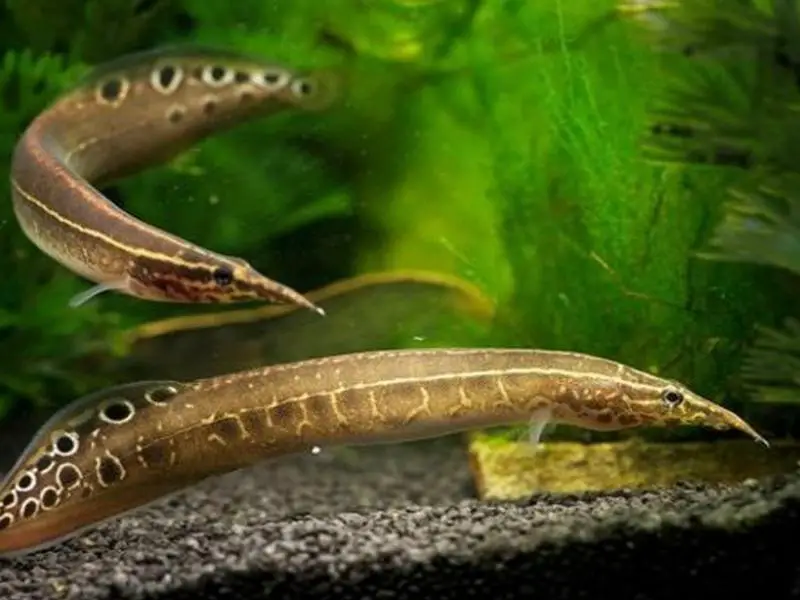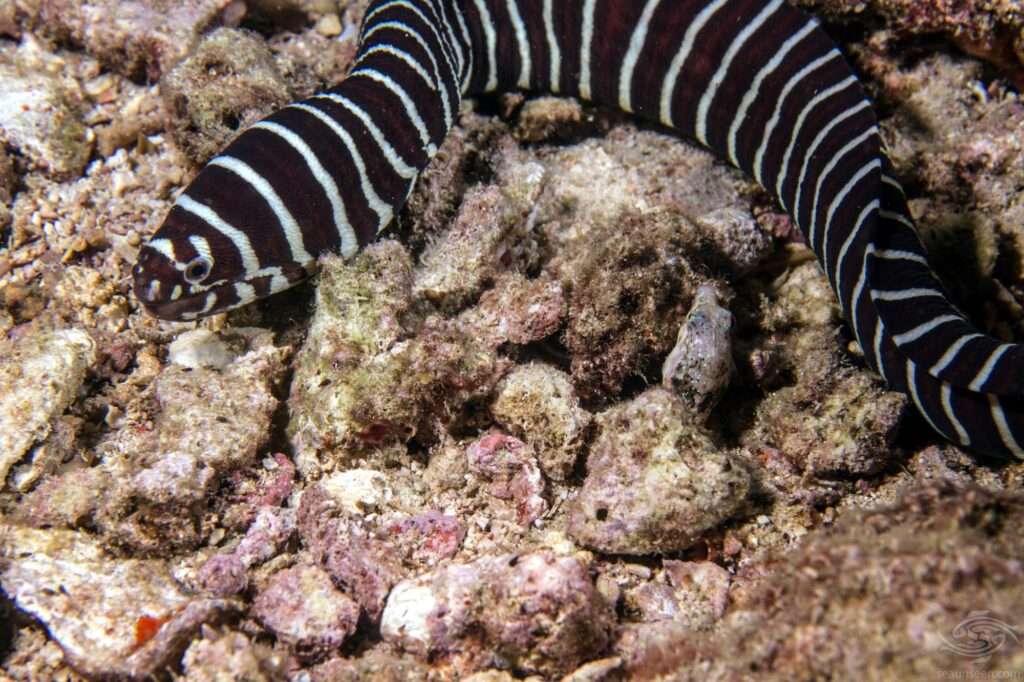
In addition to being uncommon in the aquarium trade, the Purple Spaghetti Eel Moringua raitaborua is also a curious fish that gets little attention once it is placed in the aquarium. Due to its extreme shyness, it prefers to remain unnoticed and spends the most of its time burrowing in a fine sand substrate. This eel is a genuine one. It belongs to the family of “worm eels” or “spaghetti eels,” Moringuidae. It can grow to a length of little over 17 inches (44 cm), which is fairly long. Although its body is long, thin, and “spaghetti-like,” as its name suggests. Since its head is so little, it blends in with the rest of the body.
It has small, skin-covered eyes as well. In addition to having a body that resembles spaghetti, the Purple Spaghetti Eel is so named because of its overall pinkish or purplish brown hue. It goes by the name Pink Paddletail Eel as well. This name alludes to both the fish’s fins and colour. Near the back of the animal are the dorsal and anal fins, which are actually more like folds. The caudal fin connects them, giving the back end of the animal a paddle-like protrusion.
Traits
A “real” eel, the Purple Spaghetti-eel belongs to the Moringuidae family of “worms and spaghetti eels.” Its body is long, thin, and “spaghetti-like,” as its name suggests. This eel can reach a maximum length of around 17 1/3 inches (44 cm) and typically lives between 5 and 12 years. The body has a pale purplish-brown to pinkish gold tint.
This spaghetti eel’s head is quite small and blends in with the body. Its tiny, skin-covered eyes are also rather small. They have low-set gill holes on the body. They don’t have scales, and their body is coated in smooth skin. The caudal fin connects the dorsal and anal fins, which are more like folds on the back of the eel.
Keeping as Pet

Face Difficulty to Keeping in Aquarium
The more experienced aquarist is advised to use this eel. It tends to take some time to overcome its shyness and might be rather sensitive to change. Getting them to eat might be challenging during the first few weeks. They are predominantly a brackish water species and need highly pure water. They lack scales, making them vulnerable to parasites and fungi, as well as extremely susceptible to treatments. Copper-based treatments should be avoided because these fish do not respond well to them. With this eel, brackish water experience is best for long-term success.
Food Habits
Carnivores are the Purple Spaghetti-eels. In the wild, they prey primarily on insect larvae but sometimes on tiny fish and crabs. They are compared to a moray eel that “eats insect larvae.” This fish enjoys eating brine shrimp, tubifex, and bloodworms in aquariums. Live food is preferred, but frozen food is probably OK.
Despite having relatively small mouths, because they are carnivorous, they will consume small fish if given the chance, including neons, guppies, and livebearer fry. Although this fish prefers to eat at night, it is occasionally possible to feed it during the day if it comes out of hiding.
Social Behavior
Due to its extreme shyness, this eel will spend the most of its time with its head buried in the soft substrate. It poses little hazard to the majority of tankmates in a communal aquarium because of its small head and mouth. However, in addition to small fish, it also preys on benthic invertebrates (insect larvae, worms, etc.). It could eat fish that were small enough to fit in its mouth in a communal aquarium. Make sure the other fish in the aquarium are too big to consume. Avoid small species like livebearer fry, neons, and guppies, among others. Additionally, keep them away from larger, more aggressive eels.
Table





